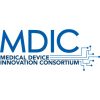Human factors and ergonomics is a science that has been around and respected for decades. Applying knowledge about people, their abilities, limitations and behaviors to the design of products and systems has been part of a robust design and development process for as long as most of us remember. Arising from the aviation and military industries, human factors engineering is used to optimize design to users’ capabilities while minimizing the negative consequences of their limitations. Presently, the medical device development community has begun to adopt the principles and methods of human factors engineering with vigor as they learn and experience the values and benefits of having a human factors plan.
“…human factors engineering is utilized to optimize to users’ capabilities while minimizing the negative consequences of their limitations.”
Up until recently, (draft) guidance from the FDA on human factors engineering in medical device development was perceived as a perplexing new process that device companies had to decipher. Now with some time and experience and a newly issued guidance in place, what is being asked of manufacturers is much better understood. In addition, the FDA encourages companies to contact them in the planning process so that they can provide counsel on methods and activities to minimize irrelevant or incomplete work that might affect their submission review.
Attend the webinar, Identifying User Needs in MedTech Product Development | August 4, 2016 | 12 pm – 1:30 pm ET | REGISTERWhy Do Human Factors Engineering?
Patients, healthcare professionals and caregivers have distinct use challenges (compared to the general public) to overcome when using devices. Developing devices for FDA approval helps to ensure safety and effectiveness, preventing accidental harm and death. By extension, this decreases the costs associated with usability problems, such as increased training, recalls, litigation and customer support.
But aside from the obvious reason that FDA mandates it, applying a human factors process because you want to is often more effective than doing it because you have to. Looking a little further provides a compelling business case for why companies cannot afford to overlook human factors.
Consider instead the many other positive outcomes that are derived from creating products that have been designed with the appropriate level of human factors engineering influence. A device that has a positive user experience enables a product to be embraced by its users (or in the case of medical devices where no one really wants to be using one in the first place, to at least be perceived as unobtrusive in one’s daily life). A positive interaction can build long-term brand loyalty and grow a base of product evangelists. Seamless interactions and well thought out design can enhance market differentiation, encourage adoption and minimize abandonment.
REGISTER to attend the MedTech Product Development conference | September 29-30, 2016 | St. Paul, MN Effective Human Factors Begins with Understanding
The bedrock to any sound human factors plan starts with understanding three key aspects of use of one’s device: Who are the intended users, what are the environments in which the device will be used, and what interactions a user is intended to have with the device. Understanding the range and variation within each of these aspects ensures that the resulting design inputs are relevant and appropriate.
To understand users, we have to be sensitive to their capabilities and limitations. Different users have varying levels of physical capabilities and traits like vision, strength and comorbidities, which can indicate physical limitations. Cognitive abilities also vary widely and can greatly affect speed of learning, memory and attentiveness. Understanding target users’ past experiences and emotional states of being can also greatly affect how a device should be designed.
We must also strive to understand the various environments that users will find themselves in when interacting with our products. When a space has poor lighting, too much noise, or has other equipment cluttering the space, it can lead to more human factors challenges. Interactions in a clinical space differ greatly compared to using the same device outside or within a home environment. Performing observational research within the environmental context of use is a technique that is extremely valuable to appreciate these factors.
Finally, understanding the key points of interaction between the user and device is critical. These may be physical interactions, like wearing or handling a device, and cognitive interactions like understanding displays, knowing what to do next, and interpreting information from a report. Adopting a systems approach to understanding the necessary interactions allows one to design more intuitive and efficient workflows while minimizing the physical and cognitive demands on the user.
Sorting It Out
With a solid understanding of users’ capabilities and limitations, the influences of their environments, and key interactions, what do we do with all this information? This is the part that is so critical, but often left to
chance or uninformed “debates” about priorities. It is crucial to establish a list and hierarchy of user needs so that designers and engineers can understand how to prioritize design efforts when there are competing user needs.
“It is crucial to establish a hierarchy of user needs so that designers and engineers can understand how to prioritize design efforts when there are competing user needs.”
Where Should Human Factors Be Conducted Within the New Product Development Process?
Admittedly, this is a trick question. The answer is, of course, throughout the entire process. An effective human factors plan influences all stages of development. The duty of the human factors engineer is to be an advocate for the user whenever design decisions are being made. No matter what your organization calls each stage gate and milestone, human factors and usability are key activities that parallel traditional development activities. At each stage, whether it be exploratory, concepting, refinement or confirmatory, human factors activities have different forms, objectives and outputs.
Moving Forward
While the key regulatory bodies (FDA and IEC/ISO) have updated their guidance to be much more explicit and clear, remember that these guidance documents do evolve and that it is important to stay current with the latest revisions. It is wise to be cognizant of the fact that as healthcare evolves so will the oversight and regulatory influences. A good example here is within the mHealth arena. With the explosive growth of mobile medical applications, the FDA released a separate guidance document in February 2015 to help define what constitutes a medical application and considerations for its development and use. We can see that the reach of these agencies goes beyond just physical devices and also influences processes and software.
As a final note, consider and remember that sound human factors influence in a development program extends well beyond being safe and effective. The positive influence that expert human factors input has on a device’s ultimate form and functionality are key drivers in developing solutions that encourage adoption and longterm brand loyalty, achieve market differentiation and success, and create better healthcare outcomes.







